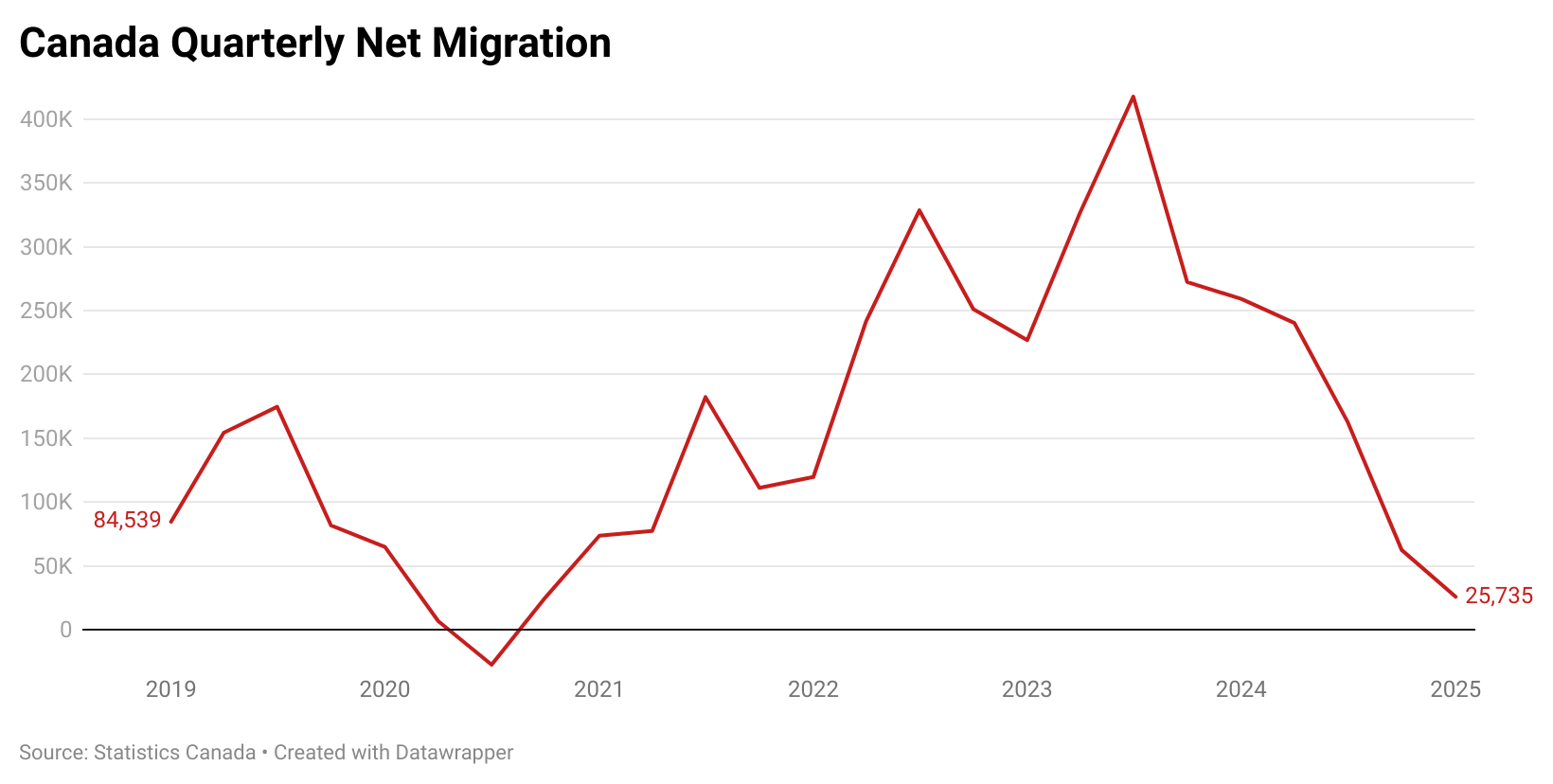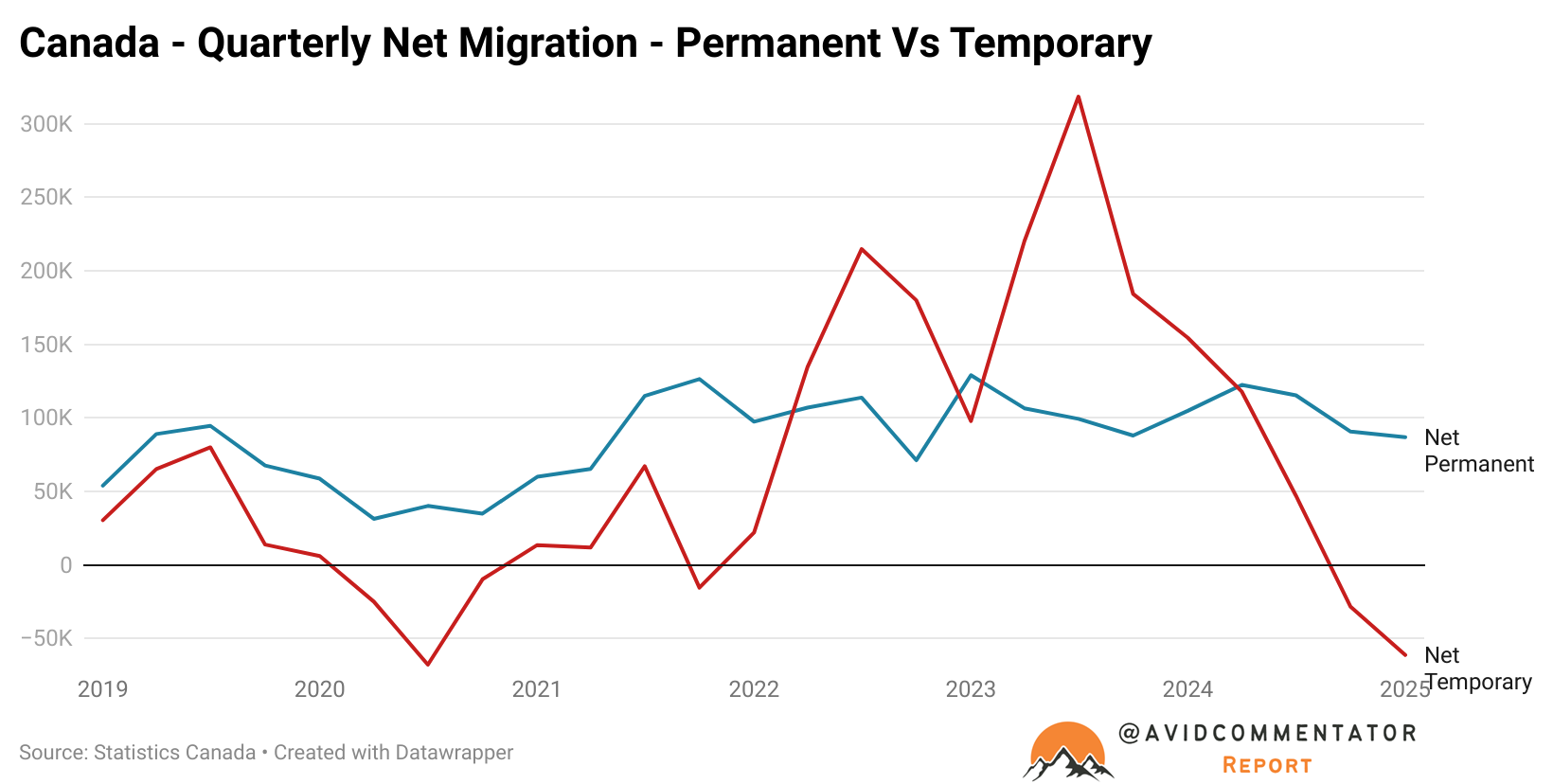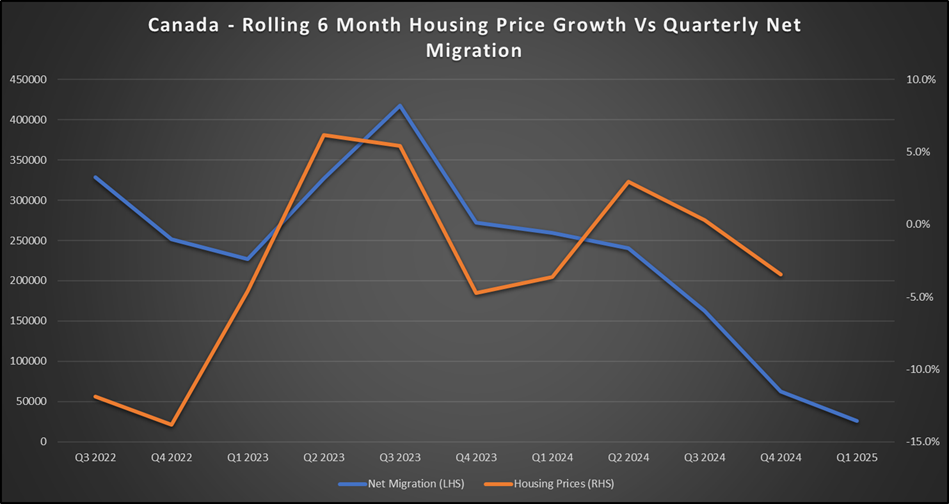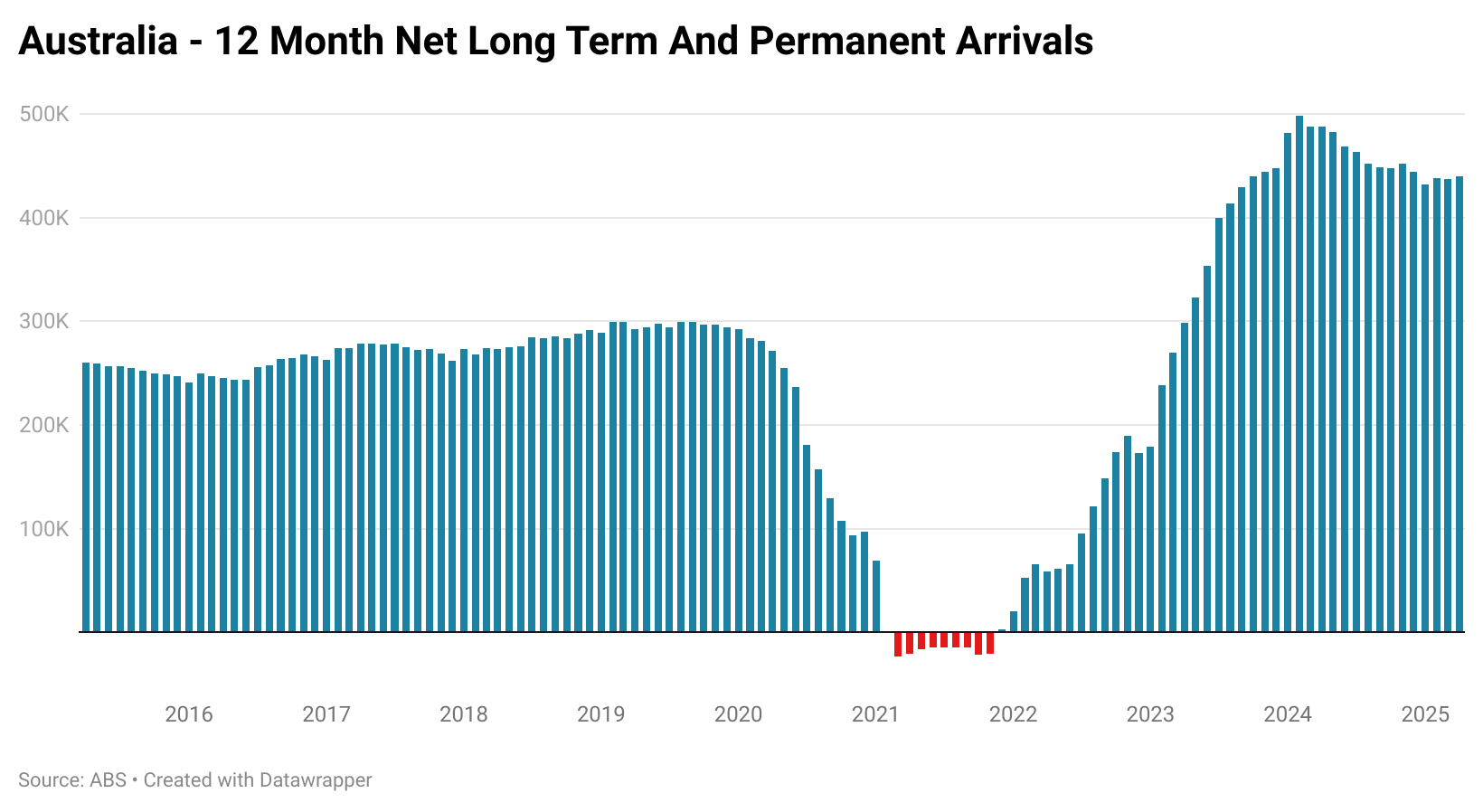When the sun set on 2023, Canada had one of the highest migration rates in the world, welcoming over 1.24 million new migrants over the calendar year, or 3.2% of the population.
This left Canada ranked number 11 on the World Bank’s list of nations by population growth for 2023, sandwiched between various nations in sub-Saharan Africa and tiny Iceland, with its population in the same league as Victoria’s Geelong or New South Wales, Wollongong.
Since then, the shift could have scarcely been more dramatic.
At the peak rate of quarterly migration in the September quarter of 2023, Canada welcomed 418,000 migrants in net terms, or a bit over 4,500 every day.
As of the latest data from Statistics Canada, which covers up to the end of the March quarter, migration fell to just 26,000 and is expected to fall further still.

Looking at the breakdown, the interesting thing is that permanent migration hasn’t stopped; it’s actually significantly higher than it was prior to the pandemic when adjusted for seasonality.
Instead, the number of temporary visa holders is falling in net terms, down by 28,000 in Q4 2024 and 61,000 in Q1 2025.

In short, Canada is still more than capable of bringing in the skilled migrants it actually needs, even while overall migration slows to a trickle.
Looking at a chart of Canadian housing prices, the downshift in population growth immediately shows.
Since quarterly net migration into Canada peaked in Q3 2023, rolling six-month housing price growth dropped dramatically.

Despite the long list of similarities between Australia and Canada, both politically and socially, the Albanese government hasn’t been able to achieve what Canada did at the relative stroke of a pen.
In Canada, in the first quarter of 2025, net migration has fallen by 69.6% compared with where it was at this time in 2019.
Meanwhile, in Australia, net long-term and permanent arrivals for Q1 are up 46.7% higher than this time in 2019.
While this isn’t a perfect proxy for net overseas migration more broadly, it is the latest available data point for arrivals into Australia.
If we take a longer view and shift the focus to a 12-month rolling figure for net long-term and permanent arrivals, it has stabilised at a level far in excess of where it was prior to the pandemic.

In 2023, Canada’s population growth rate was in the upper quartile of nations from sub-Saharan Africa.
But when the polls turned against the Trudeau government, it was clear the pathway that needed to be taken was to act like a democracy and respect the will of the electorate on this vital issue.
Australia does not do democracy on immigration and housing.

